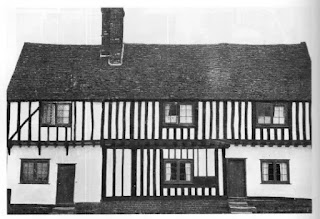The Google News offerings today provide us with more on the jigsaw theme.
Who would have thought it possible; here we have even fewer parts given to us in order to piece together to try to understand the whole. Tree houses are all about interiors and getting there; being inside, up high in a special place. It is a shame that there is no image of this experience.
https://leibal.com/interiors/barwon-heads-house-2/
Now this piece surely must give us what could be called the maximum number of pieces that ironically provides us with the minimum amount of information about the experience of the whole project. Some of the images amaze us just because they are there - 26 of them: why? Is it for their own panache?
One could call it jigging and sawing; providing photographs that frame and crop for sheer graphic delight, while suggesting that this is ‘architecture.’ We need to differentiate art, architecture, and photography. We are confusing architecture, muddling it, turning it into a fussy hybrid of hopeful pretty wonders that seek to teach us how to see, and what. Experience is much more than visual pieces, piecing. We need to get closer to understanding the relationship between the body, mind, and place, not just delight in the camera’s eye and space. A great void exists between the two, even though we use the camera to illustrate architecture. It seems that photography has stepped away from the primary role of information into its own world of clever, visual self-interest.
https://www.dezeen.com/2021/03/18/cnc-cut-plywood-spiral-staircase-tommy-rand-self-build-house/
Here we see yet another jigsaw – find the whole, if you can.
Photography has become a terrible distraction that seems to guide our ambitions and intents. While it is difficult to articulate the problems, one can identify references: Steen Eiler Rasmussen’s Experiencing Architecture might be an old publication, but it does start to touch on the variety of senses and meaning in architecture that photography blinds us to.
Then there is Christopher Alexander’s Pattern Language, a publication literally of ‘biblical’ proportions, both in large size and fine texture, that highlights elusive feelings and understandings as patterned facts for general guidance. His later set of publications, The Nature of Order, further elaborates on matters subtle and sensitive, the things ignored by the phantom of photography that loves to indulge itself just because it can.
Here, in this slaking of gratification, one can see a connection between technology and design: the computer allows us to do things just because it can, and, unfortunately, we do. We use the computer to distort and play with extremes - ‘morphing’ - and use these ad hoc results as meaningful outcomes to act as models for our buildings – yes, just because we can.
We need to discover how true meaning can be held in buildings, space, and place as ordinary wonder. Photography needs to be managed, pushed back into its role as a tool rather than as an embellishment – a gadget that can produce a layer of wonder and astonishment that lies beyond the real world. We need to root experience in the world of the everyday if we are to be enriched in our lives, rather than be entertained with amazing wide angles, clever zooms, and slick framings, distorted fabrications that are all bespoke ways of seeing what is there for the camera.













































.jpg)


.jpg)


.jpg)
.jpg)
.jpg)
.jpg)
.jpg)
.jpg)
.jpg)

.jpg)
No comments:
Post a Comment
Note: only a member of this blog may post a comment.